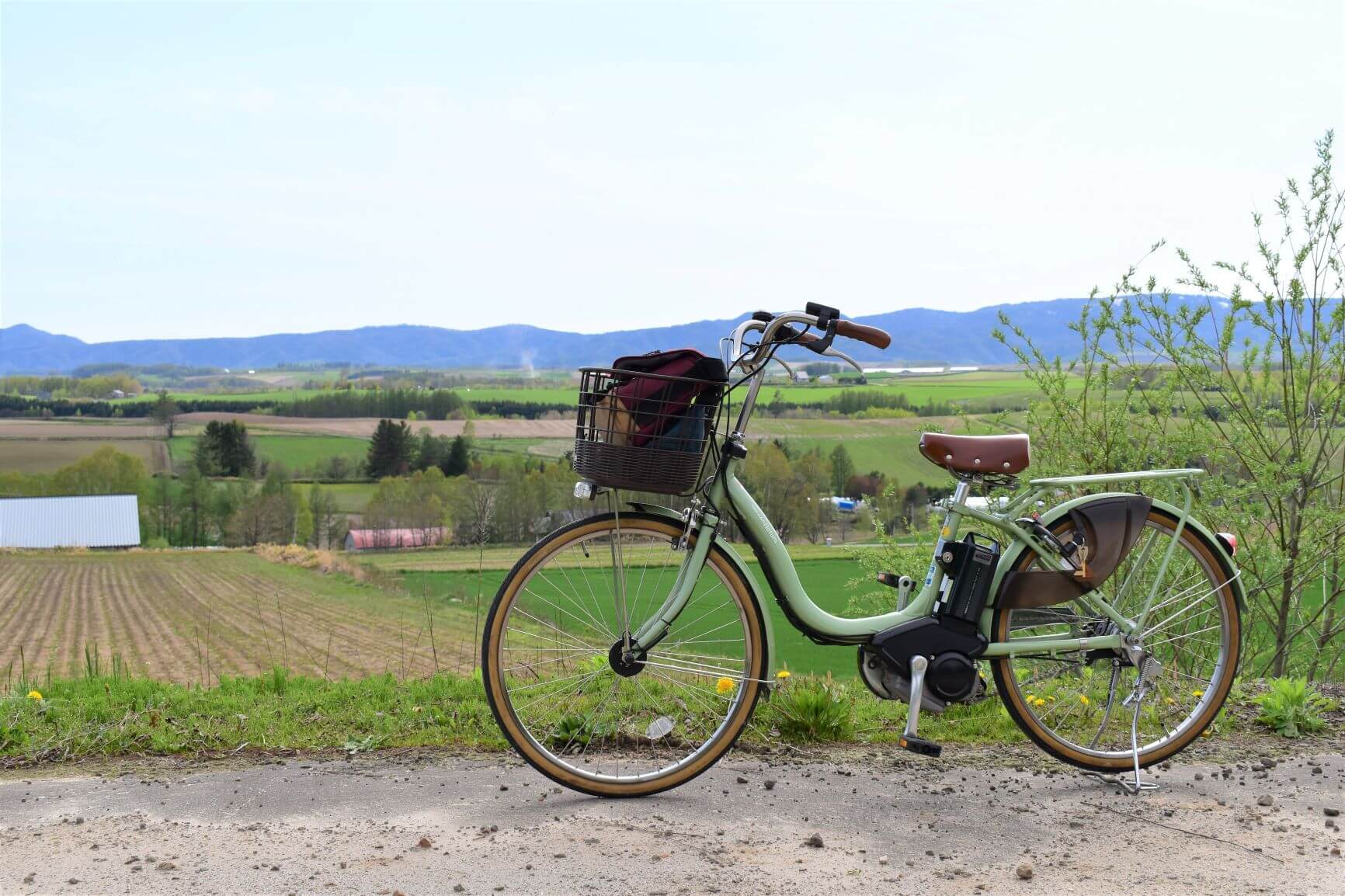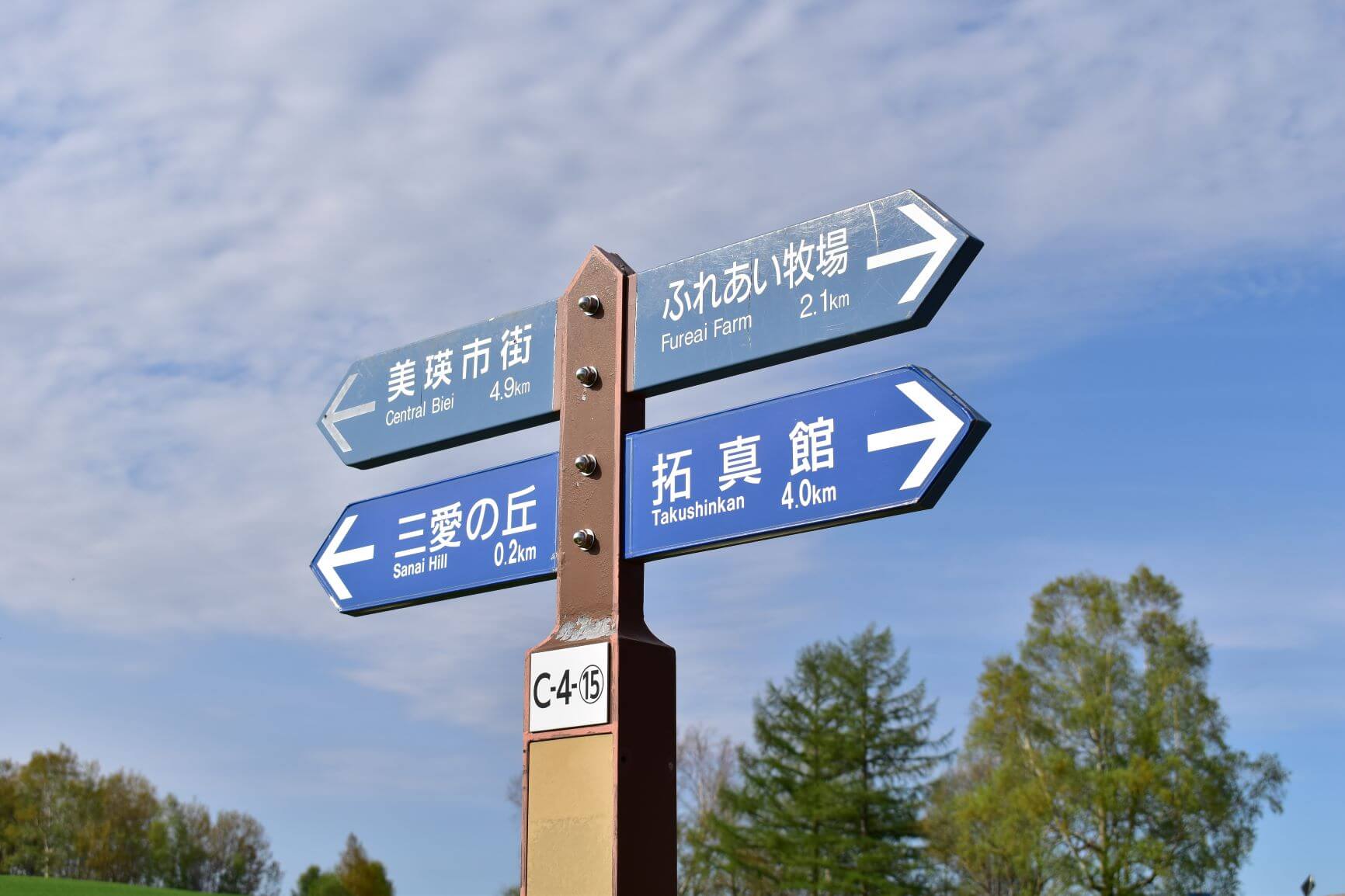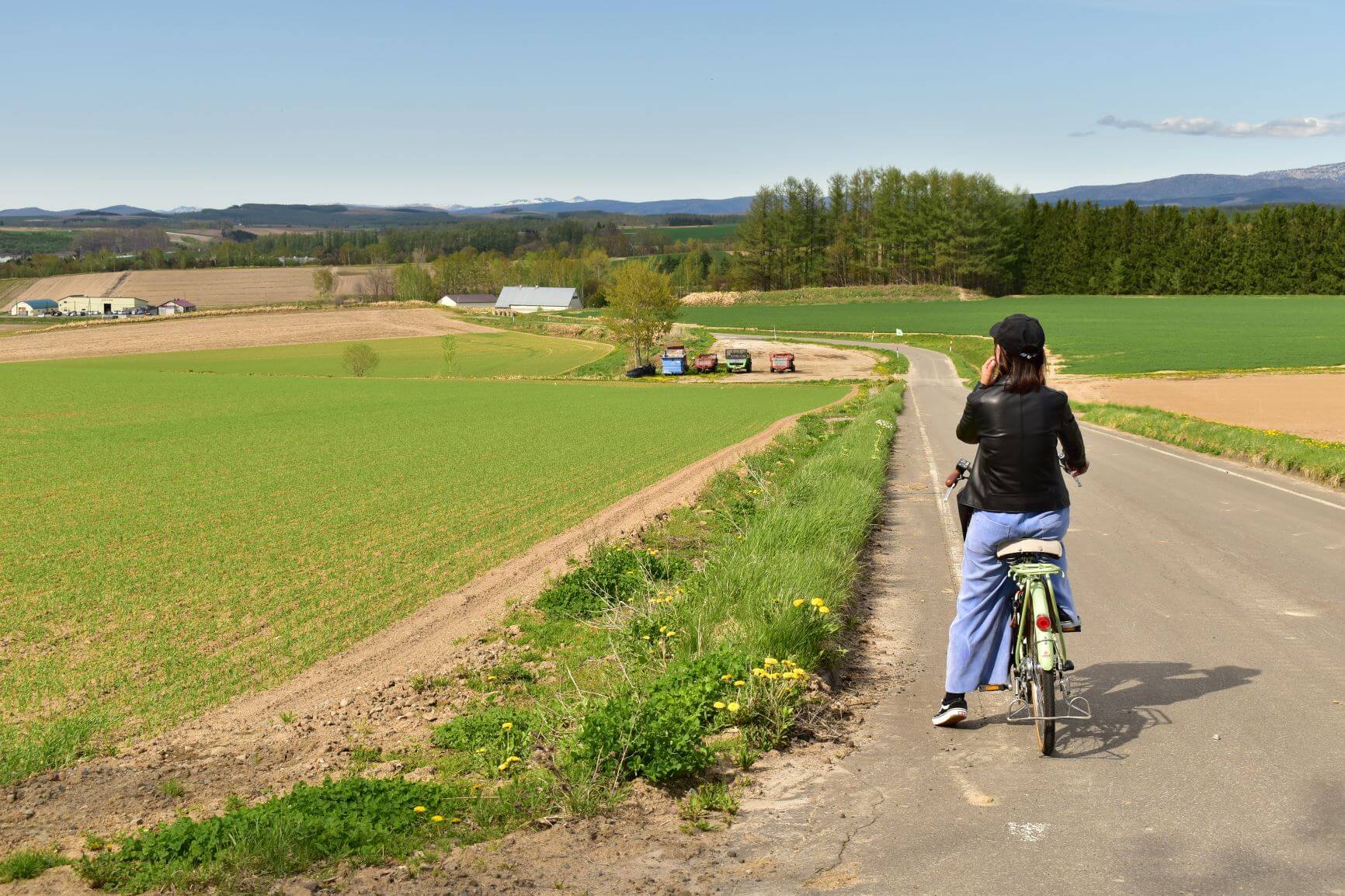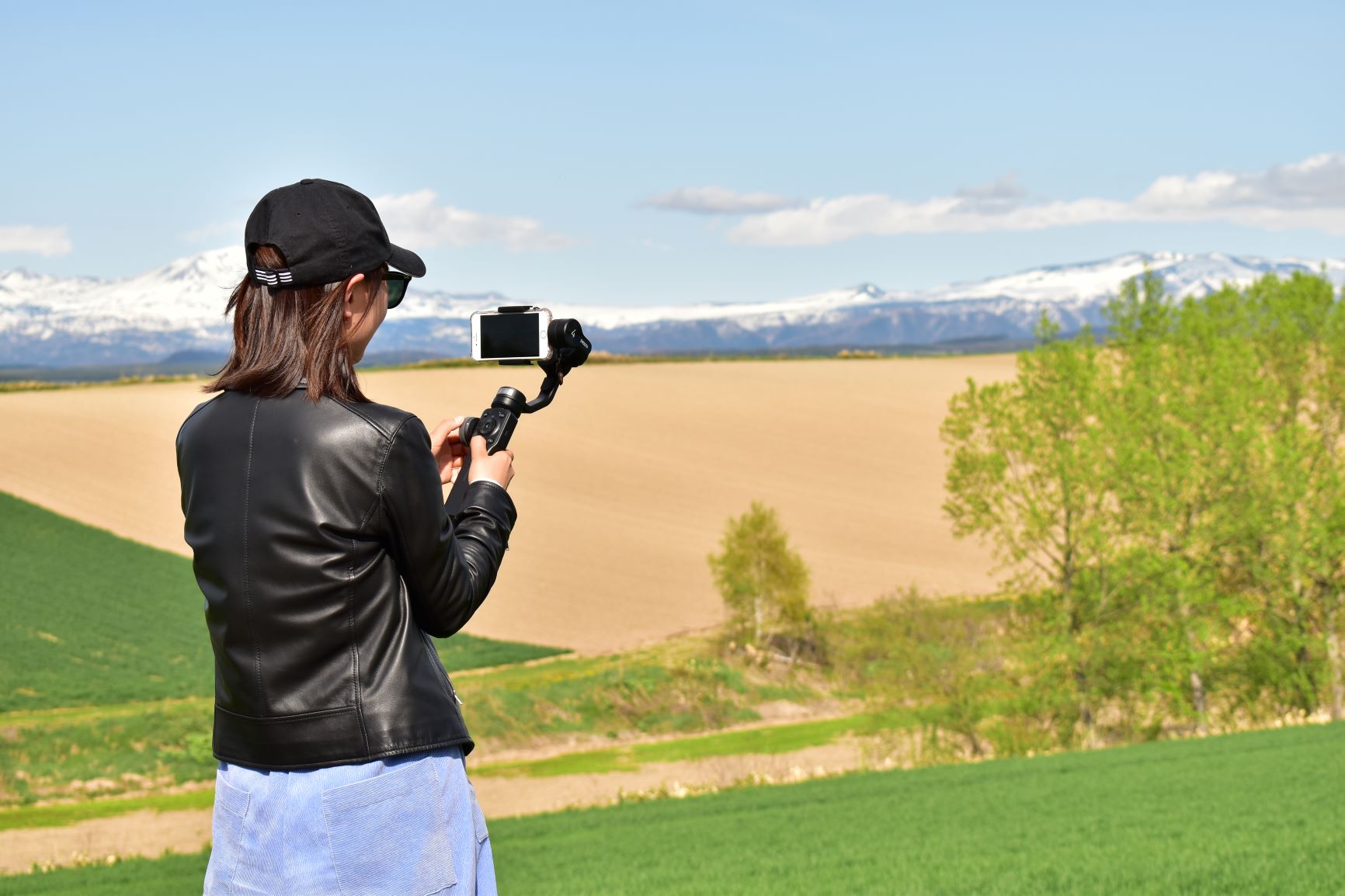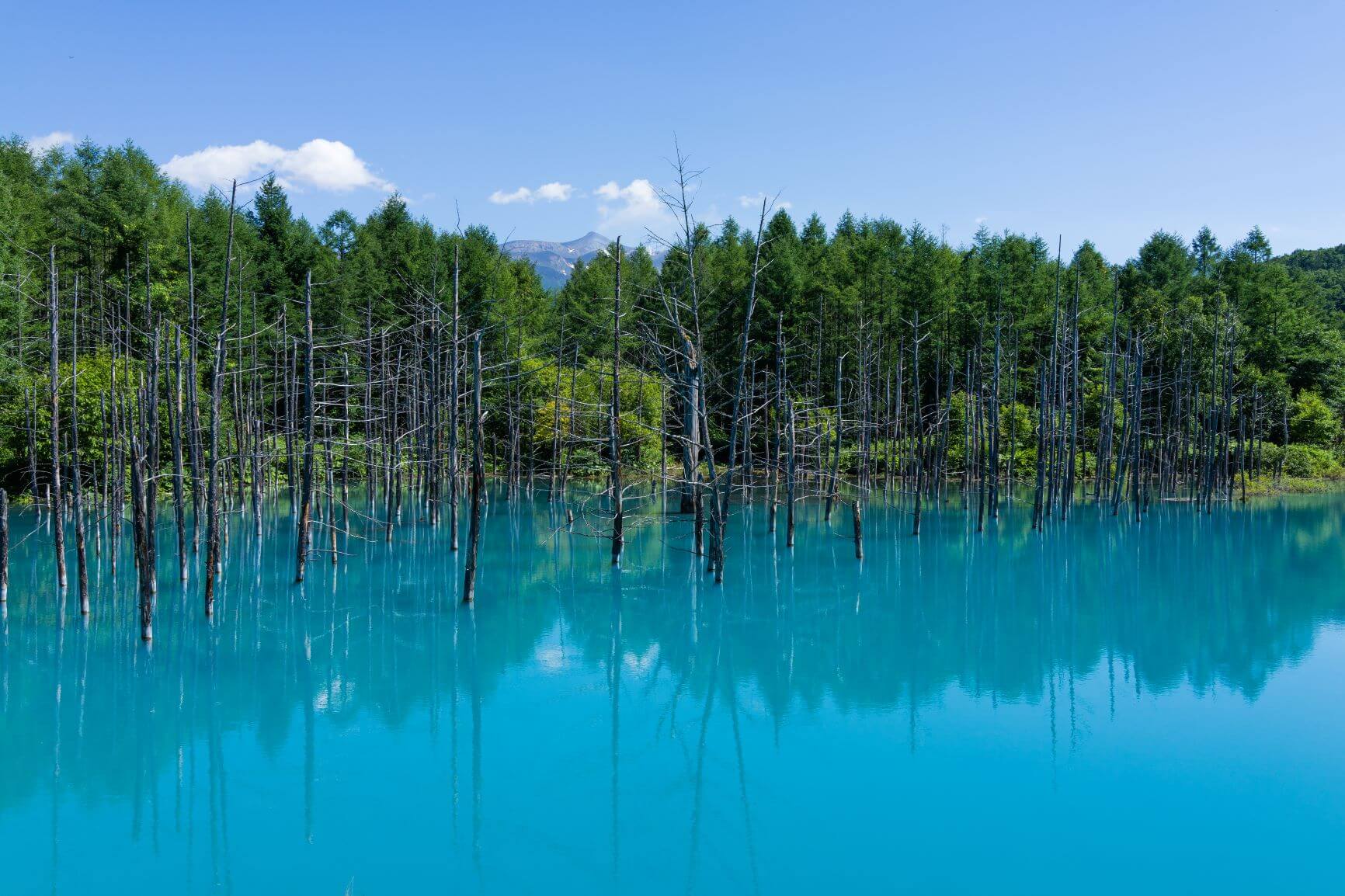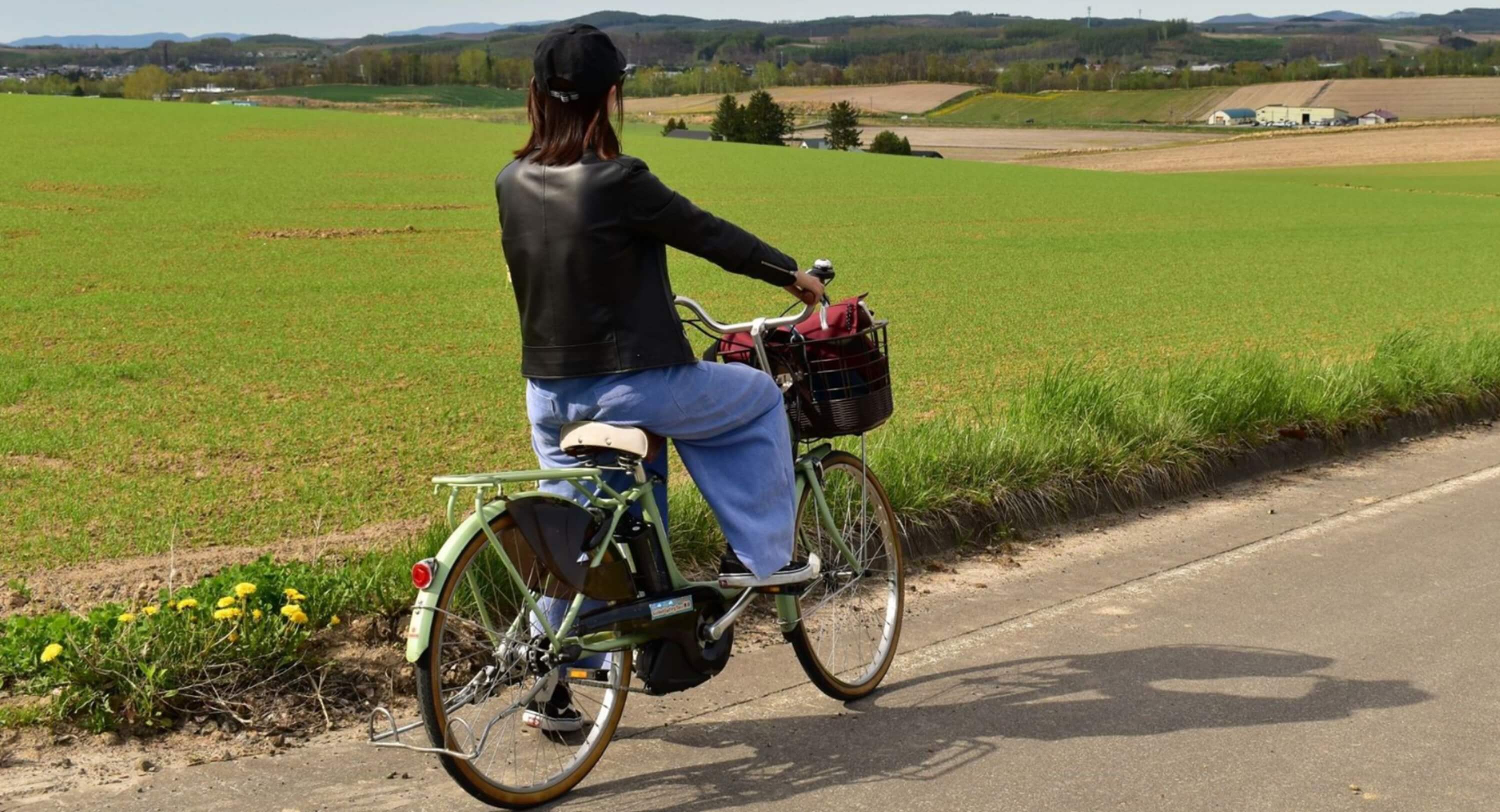
Adventures on Two Wheels - A Guide to Cycling in Biei
The wind in your hair and the scenery sloping away before you... there is nothing quite like cycling in Biei.
While you can definitely go much further and faster when using a car in Biei, you may well miss the beauty around you if your focus is on driving. To truly experience Biei, nothing beats the wonderful feeling of travelling in the open air... We're talking, of course, about exploring Biei by bicycle.
A bicycle has the advantage of being able to stop quickly and easily whenever you want. There's also a real sense of freedom that comes from cresting a hill with your trusty bike and seeing the rolling hills expanding out before you. Cycling around Biei is also very safe as the roads are wide and there are few cars.
If you're worried about tackling those steep hills, don't be-- many shops in town rent out electric bicycles to give you some extra power.
Today, we'd like to share our handy guide to cycling in Biei with you.
Before we begin, a reminder to never enter Biei's farmland either on foot or on your bicycle. Harmful bacteria or parasites stuck to the soles of your shoes or your bike tyres can get into the soil and damage or destroy crops. Please stay on the asphalt at all times and respect any signs or boundaries denoting private land. Thank you!
Where can I pick up a rental bike and how much does it cost?
Most rental bike shops are very close to Shiki-no-Jouhoukan Tourism Information Centre next to JR Biei Station. There is also a rental bike shop at Shirogane Biruke Roadside Station, but more on that later!
 Rental bikes at Shirogane Biruke.
Rental bikes at Shirogane Biruke.
All of Biei's rentacycle shops offer a great selection of both electric and road bicycles. Please be sure to take good care of the bike while you use it, or you may be charged for repairs or replacement.
As for the cost, that all depends how long you plan on using the bike and whether you choose an electric bicycle or not. Payment is usually on an hourly basis and you pay when you return to the shop. Generally speaking, the fee is around 600yen per hour for an electric bicycle.
Although electric bikes are more expensive, we do recommend them. You'll find your adventure much more enjoyable when you're not constantly stopping to push your bike up a hill! We also suggest that you visit the cycle shops early for the most choice. Cycling in Biei is more popular than ever these days and by mid-afternoon, most bikes have already been taken out. The early bird gets the worm!
As you cycle, keep an eye on the time and keep your rental shop's opening hours in mind. Most shops in Biei will close around 4:30PM ~ 5:00PM so please be courteous and aim to return your bike with plenty of time to spare before the shop closes. Otherwise, the kind owner might start to worry that something bad has happened to you!
Is it easy to get lost?
Not if you arm yourself with a road map! All rental cycle shops provide sightseeing road maps for free in many different languages. There are also plenty of other useful maps available at the Shiki-no-Jouhoukan Tourism Information Centre, so planning your route is very easy.
Handy, easy-to-read road maps...
...and any other information you might need!
Dotted around the hills are also easy-to-read road signs. They indicate nearby tourism spots. If you follow these, it's unlikely you will lose your way. Even if you do, Biei does not have that many roads so it is easy to check your map to plan your way back to your intended route.
The signposts are also coded, meaning you can locate them on your map or use them as a reference if you need to call someone for help.
We don't recommend relying on smartphone GPS. Biei is a vast, remote area and much of it has no cellphone reception, meaning GPS maps often can't get an accurate fix on where you are. Using a smartphone while cycling is also very dangerous and it is against the law in Japan. For this reason, it's a much better idea to take a paper map with you.
If you do get a little lost or you find yourself in some other trouble (flat tire, broken chain etc), don't panic! You can always wave down a tourism patrol car for help, or telephone the Biei Tourism Association.
It feels so good to enjoy the sunshine and the cool breeze!
Finally, if you do get lost, please take care not to wander onto private land. As a general rule of thumb, marked or asphalt roads tend to be public while dirt roads are often private, so stick to asphalt roads and you should be fine. If you suspect the road you are cycling on may be private, check your map. If you can't find the road on your map, it could well be private land. The best thing to do in this situation is to politely leave and make your way back to the nearest asphalt road.
Hmm... Can I go down this small road? I don't see it on my map, so I had better not.
What about the traffic? Is it safe?
Here in Biei, our roads are very wide and outside of the few national highways that cross the area, there are very few vehicles. This means that you won't need to worry about traffic around you too much.
That being said, Japanese road laws do not require cyclists to wear a helmet, so most rental cycle shops will not loan you one. All the more reason to be careful! So before your visit, take some time to familiarise yourself with some basic Japanese road safety laws and traffic signs and always obey them responsibly. Do also remember that Japan drives on the left and that cycling on the wrong side of the road is prohibited. Always cycle on the side of the road where the traffic is moving in the same direction as you. If you realise you've got your lefts and rights mixed up, wait until the road is clear and cross to the other side as quickly as you can.
Be careful when crossing unmarked intersections. Always slow down (or, if it's safe to do so, stop) and look both ways and never take any chances. If you see a stop sign (an upside-down red triangle like the picture below) then you must come to a complete stop (don't just slow down!) and check it is safe to proceed before continuing.
A Japanese stop sign is a red upside-down triangle.
Finally, be aware that the roads may sometimes be used by very large, very scary farm vehicles! Farmers of course don't want you to get hurt, and we are sure that you don't want to impede their work so if you notice tractors or combine harvesters ahead or behind you, the safest and most polite thing to do is to find somewhere safe to pull over and wait for it to pass you by.
Apart from a map, what else should I take with me?
Being so close to the mountains, the atmosphere in Biei is quite unstable, meaning the weather can change very quickly. You might stop for a quick drink at a café, only to find that when you emerge just a few minutes later, it's suddenly raining! Keep a rain coat or poncho with you, and in spring or autumn, it's also advisable to bring a warm layer as the temperature can drop very suddenly.
Try not to be deceived by Biei's cool summer temperatures, either—the sun is no less powerful here than it is anywhere else in the world. Make sure you bring plenty of fluids to drink. In summer, use sunscreen on to prevent sunburn. A hat is also a good idea-- not only will it help to protect you from heatstroke, but it will also keep the bright sunlight out of your eyes. Finally, there are not many shaded areas on Biei's road. It's a good idea to take regular short breaks in any shaded area you find.
Stay cool!
Most importantly, though... bring your camera! The great thing about cycling in Biei is that you have the freedom to stop easily and as often as you like, allowing you to see Biei's spectacular scenery at your own pace. If you're concerned that your phone or camera may run out of battery with all that shutter action, then be sure to bring an emergency charger or extra batteries.
So many photo ops in the hills!
Can I cycle to the Blue Pond?
Well, if you're feeling brave and if you're up for a challenge, then you can certainly try! Completed in May 2020, our brand new 18km cycle path stretches from Biei town to the Blue Pond. The path is very flat and follows the beautiful Biei River past farms and through the forest. Cycle time is roughly 2 hours on a regular bike, but it may be shorter than this on an electric bike. Of course, it depends on your fitness as well as how many photographs you stop to take!
Enjoy scenes like this as you follow Biei's blue river.
18km is quite a long way for most people, though-- and that's just one way! But don't worry... if you're not up to the long version, you can drive or take the local bus to Shirogane Biruke Roadside Station for the short version. You can borrow e-bikes at Biruke Roadside Station and use those to cycle the short distance to the Blue Pond. You may even have the energy to continue on to Shirahige Falls and Shirogane Onsen, too. When you're done, simply cycle back to Biruke and return the bikes before heading back into town. Much easier than a tough 36km round trip!
A beautiful sight awaits you at the end of the cycle path...
Hmm... I'm still nervous about cycling alone...
Even armed with all of this information, we're sure there will still be some of you who are a little nervous about cycling on your own. Never fear, though, as we here at Be My BIEI would like to introduce you to a wonderful cycling tour!
By joining this tour, you can leave all the navigation to your guide and just enjoy the ride! Your guide is also very knowledgeable and will be able to show you a lot of “secret” Biei spots.
Guided Cycling Tour in Biei
- Address
- Omachi 1-chome 1-7, Biei-cho, Kamikawa-gun, Hokkaido
- TEL
- 090-5956-4567 (08:00 ~ 20:00)
- Operation
- 08:30 ~ 17:30, End of April ~ End of October
*Please note that due to the 2020 outbreak of Covid-19, tours are not expected to run until at least June.
- Closed
- Please see each tour's detail for information on scheduled closure days.

